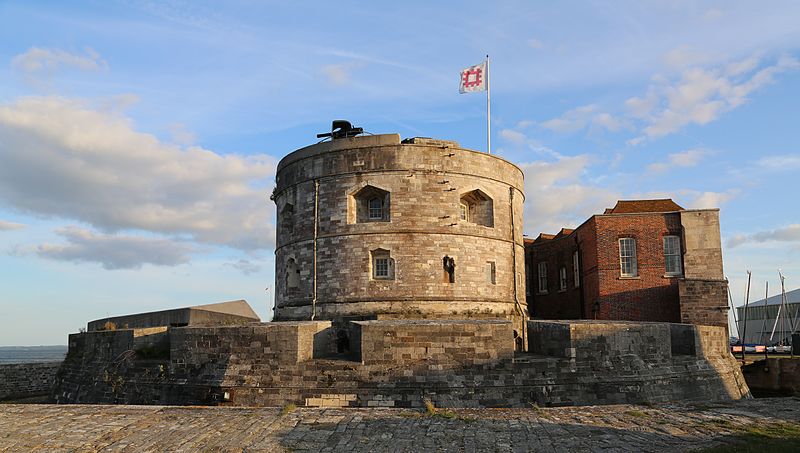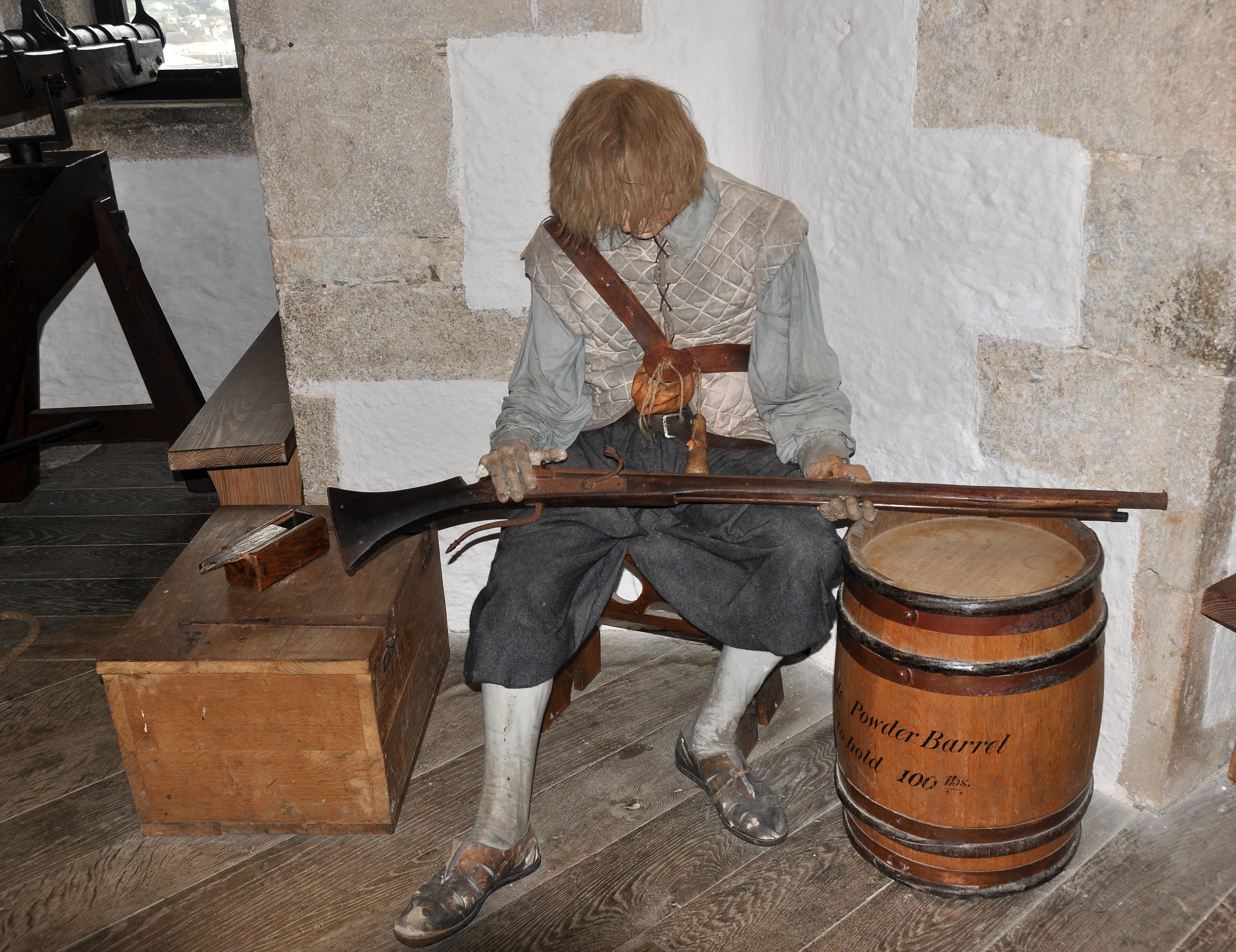Logistics


The costs of building the fortifications varied with their size. A small blockhouse cost around £500 to build, whereas a medium-sized castle, such as Sandgate, Pendennis or Portland, would come to approximately £5,000. The defensive line of Deal, Sandown and Walmer castles cost a total £27,092, while the work at Hull Castle and its two blockhouses came to £21,056.1It is difficult to accurately compare early modern financial figures with modern equivalents. See our article on medieval money for more details. Various officials were appointed to run each of the projects, including a paymaster, a comptroller, an overseer and commissioners from the local gentry. A few fortifications were built by local individuals and families; St Catherine’s Castle, for example, was reportedly paid for by the town and local gentry, and the Edgcumbe family built Devil’s Point Artillery Tower to protect Plymouth Harbour.
Much of the expenditure was on the construction teams, called “crews”, who built the forts. The numbers of workers varied during the course of the project, driven in part by seasonal variation, but the teams were substantial: Sandgate Castle, for example, saw an average of 640 men on the site daily during June 1540, and the work at Hull required a team of 420. A skilled worker was paid between 7 and 8 pence a day, a labourer between 5 and 6 pence, with trades including stonemasons, carpenters, carters, lime burners, sawyers, plumbers, scavelmen, dikers and bricklayers. Finding enough workers proved difficult, and in some cases men had to be pressed into service unwillingly. Labour disputes broke out, with strikes over low pay at Deal in 1539 and at Guisnes in 1541; both were quickly suppressed by royal officials.
Large amounts of raw materials were also needed for the work, including stone, timber and lead and many other supplies. Camber, for example, probably required over 500,000 bricks, Sandgate needed 44,000 tiles, while constructing a small blockhouse along the Thames was estimated by contemporaries to require 200 tonnes (220 short tons) of chalk just to enable the manufacture of the lime mortar. Some materials could be sourced locally, but coal was shipped from the north of England and prefabricated items were brought in from London.
Most of the money for the first phase of Device works came from Henry’s dissolution of the monasteries a few years before, and the revenues that flowed in from the Court of Augmentations and First Fruits and Tenths as a result. In addition, the dissolution had released ample supplies of building materials as the monastic buildings were pulled down, and much of this was recycled. Netley Castle, for example, was based on an old abbey and reused many of its stones, East Tilbury Blockhouse reused parts of St Margaret’s Chantry, Calshot Castle took the lead from nearby Beaulieu Abbey, East and West Cowes castles stone from Beaulieu and Quarr, and Sandgate had the stone from the local Carmelite friary. Milton Blockhouse was constructed on land that had recently been confiscated from Milton Chantry. By the second phase of the programme, however, most of the money from the dissolution had been spent, and Henry instead had to borrow funds; government officials noted that at least £100,000 was needed for the work.2It is difficult to accurately compare early modern financial figures with modern equivalents. See our article on medieval money for more details.
Garrisons


The garrisons of the Device Forts comprised relatively small teams of men who typically lived and worked in the fortifications. The garrisons would maintain and care for the buildings and their artillery during the long periods of peacetime and, in a crisis, would be supplemented by additional soldiers and the local militia. The size of the garrisons varied according to the fortification; Camber Castle had a garrison of 29, Walmer Castle 18, while the West Tilbury Blockhouse only held 9 men. The ordinary soldiers would have lived in relatively basic conditions, typically on the ground floor, with the captains of the fortifications occupying more elaborate quarters, often in the upper levels of the keeps. The soldiers ate meat and fish, some of which might have been hunted or caught by the garrison.
The garrisons were well organised, and a strict code of discipline was issued in 1539; the historian Peter Harrington suggests that life in the forts would have usually been “tedious” and “isolated”. Soldiers were expected to provide handguns at their own expense, and could be fined if they failed to produce them. There were only around 200 gunners across England during the 1540s; they were important military specialists, and the historians Audrey Howes and Martin Foreman observe that “an air of mystery and danger” surrounded them.
The rates of pay across the defences were recorded in 1540, showing that the typical pay of the garrisons was 1 or 2 shillings a day for a captain; his deputy, 8 pence; porters, 8 pence; with soldiers and gunners receiving 6 pence each. In total, 2,220 men were recorded as receiving pay that year, at a cost to the Crown of £2,208.3It is difficult to accurately compare early modern financial figures with modern equivalents. See our article on medieval money for more details. Although most garrisons were paid for by the Crown, in some cases the local community also had a role; at Brownsea, the local town was responsible for providing a garrison of 6 men, and at Sandsfoot the village took up the responsibility for supporting the castle garrison, in exchange for an exemption from paying taxes and carrying out militia service.
Armament


The artillery guns in the Device forts were the property of the Crown and were centrally managed by the authorities in the Tower of London. The Tower transferred them between the various fortifications as they felt necessary, often resulting in complaints from the local captains. Various surviving records record the armaments held by individual forts on particular dates, and between 1547 and 1548 a complete inventory was made of the Crown’s possessions, detailing the weapons held by all of the forts. The number of guns varied considerably from site to site; in the late 1540s, heavily armed forts such as Hurst and Calshot held 26 and 36 guns respectively; Portland, however, had only 11 pieces. Some forts had more guns than the level of their regular, peace-time garrison; for example, despite only having an establishment of 13 men, Milton Blockhouse had 30 artillery pieces.
A variety of artillery guns were deployed, including heavier weapons, such as cannons, culverins and demi-cannons, and smaller pieces such as sakers, minions and falcons. Some older guns, for example slings and bases, were also deployed, but were less effective than newer weapons such as the culverin. With sites equipped with several tiers of weapons, the heaviest guns would typically be placed higher up in the fortification, with the smaller weapons closer to the ground. It is uncertain how far the guns of the period would have reached; analysis carried out in the 16th and 17th century on the ranges of artillery suggested that the largest weapons, such as a culverin, could hit a target up to between 1,600 and 2,743 metres (5,200 ft and 8,999 ft) away.
The forts were typically equipped with a mixture of brass and iron artillery guns. Guns made of brass could fire more quickly—up to eight times an hour—and were safer to use than their iron equivalents, but were expensive and required imported copper. During the 1530s, Henry had established a new English gun-making industry in the Weald of Kent and London, staffed by specialists from mainland Europe. This could make cast-iron weapons, but probably initially lacked the capacity to supply all of the artillery required for the Device forts, particularly since Henry also required more guns for his new navy. A technical breakthrough in 1543, however, enabled the introduction of vertical casting and a massive increase in Henry’s ability to manufacture iron cannons.
Few guns from this period have survived but, during excavations in 1997, an iron portpiece was discovered on the site of the South Blockhouse in Kingston on Hull. The weapon, now known as “Henry’s Gun”, is one of only four such guns in the world to have survived and is displayed at the Hull Museums.
In addition to artillery, the Device Forts were equipped with infantry weapons. Handguns, typically an early form of matchlock arquebus called a hagbush, would have been used for close defence; these were 6-foot (1.8 m) long and supported on tripods. Many forts also held supplies of bows, arrows and polearms, such as bills, pikes and halberds. Longbows were still in military use among English armies in the 1540s, although they later declined quickly in popularity, and these, along with the polearms, would have been used by the local militia when they were called out in a crisis.
Bibliography
Attribution
The text of this page was adapted from “Device Forts” on the English language website Wikipedia, as the version dated 30 July 2018, and accordingly this page is licensed under CC BY-SA 3.0. Principle editors have included Hchc2009, 157.203.42.132 and Nev1, and the contributions of all editors can be found on the history tab of the Wikipedia article.
Photographs on this page include those drawn from the Wikimedia website, as of 22 July 2018, and attributed and licensed as follows: “Calshot castle evening“, author Geni, released under CC BY-SA 3.0; “St Mawes Castle 3“, author Nilfanion, released under CC BY-SA 3.0; “Pendennis Castle renactment display“, author Chris Downer, released under CC BY-SA 2.0.
